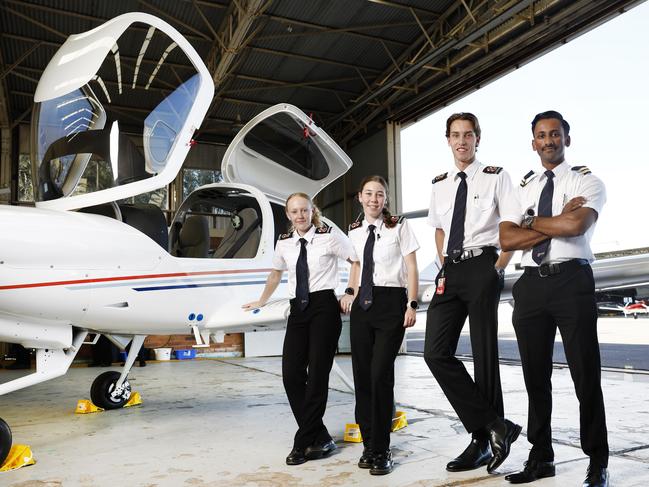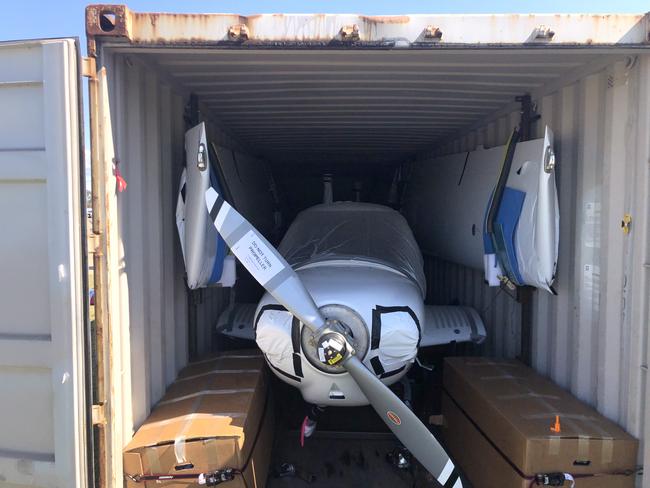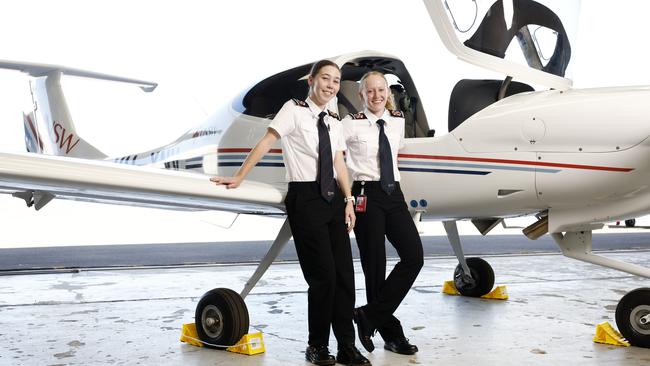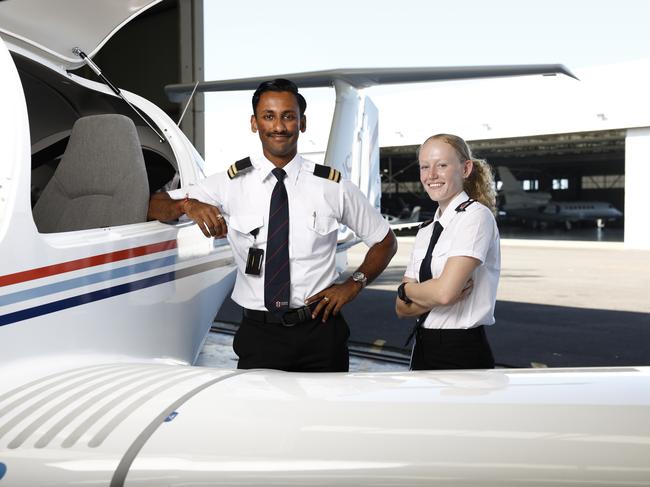UNSW purchases six state-of-the-art aircraft for School of Aviation amid national pilot shortage
As Australia stares down the barrel of a looming pilot shortage, more than a hundred NSW university students are taking to the skies in brand new, state-of-the-art training aircraft.
Education
Don't miss out on the headlines from Education. Followed categories will be added to My News.
As Australia stares down the barrel of a looming pilot shortage, more than 100 NSW university students are taking to the skies in brand new, state-of-the-art training aircraft.
The University of NSW (UNSW) is one of only two Australian universities to have its own aircraft, and has bought six new Diamond DA40 XLT single-engine light planes from Canada, two of which have been shipped, reassembled onshore and taken out for test flights while four more are on their way.
Designed in Austria, the four-seat planes can reach a maximum altitude of 16,400 ft (about 5000 metres) and retail for around $900,000 each.
The six additions take UNSW’s total to 21 planes, and will eventually replace the oldest aircraft in the fleet.

It comes as projections from leading aircraft manufacturer Boeing show Oceania’s commercial aviation industry will need another 11,000 pilots, 12,000 technicians and 18,000 cabin crew to meet demand by 2043.
Head of UNSW’s School of Aviation at Bankstown Aerodrome Brett Molesworth said the Bachelor of Aviation (Flying) is already at capacity with the hundred or so students currently enrolled in the course.
“We’re struggling because we only have the size of this hangar, and although we’re looking at a new premise it’s not going to be much larger, and we have a limited fleet – they’re the operational constraints that prohibit us from taking much more students,” he explained.
“It comes back to standards. We have a one instructor to four students ratio, which is quite low in the industry.”

John Oppenheim, director of aircraft and parts distributor Utility Air, said “incredibly high demand” for more pilots has resulted in an increased proportion of aircraft sales going to education providers, rather than commercial operators.
“The flying schools are responding to incredibly high demand for pilots, and the pilot shortage is leading to increased training hours – and that’s offsetting the rising price of aircraft,” Mr Oppenheim said.
“Whilst we have a lot of aeroplanes, one of the key bottlenecks is the lack of training instructors – there’s a real demand throughout all of the levels.”
Qantas A330 pilot Wayne Daly facilitates UNSW’s mentorship program with the Australian and International Pilots Association (AIPA), and said one of the biggest drains on the workforce is an issue that has plagued the industry for decades – unpaid and low-paid labour.

“The (Qantas) projection is somewhere in the vicinity of around 400 (more) pilots a year for about the next decade … and there are only around about 300 or 350 new commercial pilots graduating in Australia each year, on average,” he said.
However, many young pilots with newly-obtained commercial licenses fly for low or no pay for up to five years in order to accumulate the 500 hours of flying experience required by the national carrier, first officer Daly explained.
“This is unfortunately the problem with aviation, and until we can get rid of that, then I think we’re going to be stuck with a fairly significant challenging in attracting people into the industry,” he said.
“When I was first learning to fly I was told this is a rich man’s business, and unfortunately to a degree that’s still true.”

UNSW Aviation alumnus turned flying instructor Arjun Jogia said anyone considering a career as a pilot should ensure they have a “true passion” for flying.
“Continuous hard work and discipline will get you there,” he said.
Second-year student Lillian Miller has only ten flights under her belt but will spend the majority of her studies this year in the air, gaining the hours of training she’ll need to obtain a commercial pilot’s license.
“I didn’t want a desk job,” she said.
“I would love to be a commercial pilot, or maybe (fly with) the Royal Flying Doctor Service, but they’re really hard to get into, so we’ll see!”
Do you have a story for The Daily Telegraph? Message 0481 056 618 or email tips@dailytelegraph.com.au





